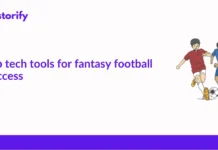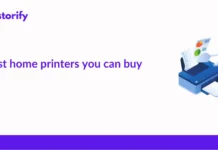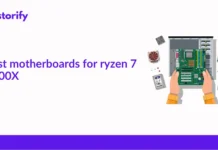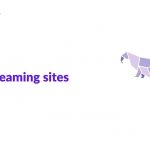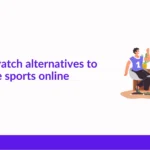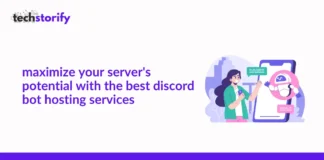The thought behind open source has been around for quite a long time, sometime before the development toward open source programming in the last part of the 1980s—even before PCs and a long time before the Internet of Things (IoT) platforms available today. In the early days of cars, George Selden possessed the patent on the two-cycle gas motor, which implied no automobile producers could go astray from Selden’s fundamental plan and necessities without a claim.
Henry Ford shut down that by effectively testing Selden’s patent and delivering it for all intents and purposes pointless. This activity likewise prompted the Motor Vehicle Manufacturers Association and “cross-permitting,” which permitted US automobile makers to create and share their advancements straightforwardly without the danger of prosecution between different auto organizations. One could say that this methodology quickened the advancement and accessibility of those new advances to standard buyers.
Quick forward to 2015-we’re at a critical point in mankind’s set of experiences, as we hope to open-source answers to quicken the advancement and selection of IoT.
Contents
- Drivers for open source
- 1. Scale
- 2. Velocity of innovation
- 3. Vibrant developer community
- 4. Interoperability
- 5. No lock-in
- 6. Industry-wide exploration of IoT open source innovations
- Open Source Internet of Things (IoT) Platforms and Tools
- 1. Eclipse Kura
- 2. ThingSpeak IoT Platform
- 3. Zetta
- 4. Open Hybrid
- 5.Node-RED
- 6. Wio Link
- 7. Macchina.io
- 8. Physical Web
- 9. Ubuntu Core
- 10. IoTivity
- 11. FarmBot
- 12. Kaa Project
Drivers for open source
There are numerous drivers behind the prominence of open source:
Buyers need to utilize an enormous assortment of customer innovation gadgets, and they would prefer not to be restricted to utilizing gadgets from one explicit merchant (some smartwatches must be combined with a similar seller’s cell phone).
Merchants of IoT gadgets need to build the number of innovation environments into which their gadgets can be coordinated without significant exertion.
Application engineers need to help a wide scope of gadgets without creating vendor-specific code.
Open source arrangements take into account this scale, speed of advancement, and adaptability.
1. Scale
To scale to associate and support 50 to 70 billion sensors in the following decade, possibly a huge number of routers, data servers and gateways will be required. It is extremely unlikely to accomplish these degrees of scale without depending on open-source structures and stages inside that foundation. Some other methodology will just be unreasonably expensive.
2. Velocity of innovation
Open source advances uphold quick development through a few favourable attributes, taking into consideration a more natural appropriation approach inside the enterprise. It’s free and for the most part, simple to download, introduce, and dispatch. This permits simple exploration and experimentation with new advances that empowers ventures to get settled with the software on more modest, non-strategic undertakings before any monetary commitment is required.
Also, open-source programming empowers permission-less development, facilitating worries over eminences or claims. Specifically, open source promotes advancement by integration, where designers make new systems by merging uninhibitedly accessible open-source parts.
3. Vibrant developer community
Open source programming projects will in general advance development quicker than proprietary solutions since they draw contributions from an enormous local area of developers. The aggregation of this local area cooperation quickens the conveyance of the key highlights and biological system that the enterprises need. The outcome is that open source, for the most part, conveys on track capabilities quicker than restrictive other possibilities.
4. Interoperability
The most ideal approach to have another innovation accomplish fast appropriation is by joining open norms with vigorous open source usage. Open-source implementations furnish a simple selection way with interoperability, and they diminish the expense of entering the market. Designers can invest less energy actualizing a norm and spotlight rather on building programming that gives the firm the product differentiating features clients esteem.
5. No lock-in
A vital bit of leeway of open-source arrangements is that they don’t secure your association to a restrictive supplier. The expense of exchanging arrangements and their merchants is commonly high, which holds endeavours and new businesses prisoner to restrictive specialist organizations. Open source mitigates the danger of exclusive arrangements being suspended or not, at this point upheld. What number of firms have bought exclusive programming and put resources into expensive customizations, just to be left with an unsupported framework or an exorbitant redesign way?
6. Industry-wide exploration of IoT open source innovations
Amyx & McKinsey led an industry-wide investigation on the open-source projects identified with IoT. Our objective was to get a cross-segment of open source projects. Our extension was not to arrive at 100% inclusion yet rather get an assorted portrayal of open source IoT projects.
The examination system consisted of an overview poll, video meetings, and auxiliary sources from sites, industry reports, and different sources. We found that not all ventures open the whole source code for open source joint effort. The level of “open” changes from venture to project. Others offer a “freemium” model or free open source code with the choice of expert administrations for help and progress devices.
A part on IoT open source, in view of Amyx+McKinsey’s research discoveries, will be remembered in the forthcoming The Internet of Things and Cyber-Physical Systems Handbook in late 2015.
Open Source Internet of Things (IoT) Platforms and Tools
Take a look at the 12 best IoT platforms and tools to help you get started.
1. Eclipse Kura

Kura runs on top of the Java Virtual Machine (JVM) and uses OSGi, a powerful segment framework for Java, to improve the way toward composing reusable programming building blocks. Kura APIs offer simple admittance to the underlying hardware comprising GPS, serial ports, guard dog, USB, GPIOs, I2C, and so on. It additionally offers OSGI pack to rearrange the administration of network setups, the correspondence with IoT workers, and the distant administration of the gateway.
Eclipse Kura rearranges network design management, correspondence with servers, and distant gateway management with the assistance of OSGi packs.
2. ThingSpeak IoT Platform

ThingSpeak API not only stores and retrieves numeric and alphanumeric data but also permits numeric information processing which incorporates :
- Time scaling
- Averaging
- Median
- Summing
- Rounding
ThingSpeak has coordinated help from the numerical computing software, for example, MATLAB from MathWorks.
3. Zetta

Recuperated more than 700 novel document designs. Completely recuperated records, messages, photographs, recordings, sound documents and the sky’s the limit from there. Supports 8 diverse information lost situations: deleted files recovery, recycle container recuperation, arranged drive recuperation.
Zetta is based on Node.js. It joins REST APIs, WebSockets, and receptive programming. Zetta servers are equipped for running in the cloud, PC, and single-board PCs.
Zetta can transform any gadget into an API. Microcontrollers like Arduino and Spark Core are used by Zetta servers giving each gadget a REST API both locally and in the cloud.
Key Features :
- Open source –This is Node.js based open-source platform for the IoT. It’s a complete tool compartment for creating HTTP APIs for gadgets.
- Elegant – Using JavaScript, Zetta designers express gadgets as state machines utilizing an exquisite and expressive syntax. Zetta is a totally Node.js based structure that is cross-platform, and effectively deployable to numerous cloud administrations.
- API driven – Zetta creates a consistent Hypermedia HTTP API for gadgets displayed in JavaScript. Our HTTP APIs are communicated utilizing the Siren particular.
- Real-timeZetta opens WebSocket endpoints which stream real-time occasions out of the Zetta framework. This worldview of combining Hypermedia with WebSocket streaming is otherwise called Reactive Hypermedia.
- Protocol agnostic – Zetta can uphold practically all gadget conventions, and intercede them to HTTP.
- Persistent connections – Zetta can create diligent associations between servers to uncover APIs in new and extraordinary manners.
- Question and notifications – Zetta has a powerful inquiry framework that permits you to look for gadgets, yet additionally subscribe to WebSockets to be told when new gadgets come online that satisfy the query. The inquiries have a SQL-like syntax which makes it simple to fight devices in the API, and Zetta itself.
- Consistent interfaces – Built from the beginning, Zetta tackles explicit issues around creating consistent interfaces for gadgets.
4. Open Hybrid

This stage permits you to:
- Make Augmented Reality content with HTML as well
- Make Augmented Reality with no information about 3D Programming
- Associate the functionality of objects with a basic drag and drop paradigm.
- Program your items or objects with Arduino
- It superimposes the cellphone application straightforwardly onto the gadgets we need to work every day with an intuitive arrangement of knobs and buttons.
- The interface of Open Hybrid is seen through the viewpoint of a tablet or keen cell phone.
5.Node-RED

It is a program based flow editorial manager that permits you to make JavaScript functions effortlessly. It likewise has an underlying library with which you can save valuable functions and flows for reuse.
Node-RED is based on Node.js, exploiting occasion driven and non-hindering models, making it ideal to run on minimal effort equipment, for example, Raspberry Pi and in the cloud.
The flows made in Node-RED are put away utilizing JSON, which can be effectively imported and exported.
6. Wio Link

You should simply install an App on your cell phone, and you can construct a straightforward IoT project quickly.
Highlights:
- Certificate by Grow with Google- Google IT Support Professional.
- No Hardware Programming – Uses visual set up through mobile APPs to supplant the complex microcontroller programming.
- Solid help from the large group of open-source, Grove sensors and actuators.
- The sensor tags have to be dragged and dropped to specific Pins, then you can outwardly set up the equipment.
- RESTful API resources allow you to work effectively with the “visualized” sensors and actuators.
- All the hardware libraries are prepared in the cloud for use and you can zero in on application advancement.
- You can associate with companions at Facebook, Twitter, and Instagram through IFTTT channels.
7. Macchina.io

It actualizes a web-empowered, modular, and extensible JavaScript along with C++ runtime climate. It also furnishes readily accessible, simple to utilize building blocks. These building blocks permit your application to converse with different sensors, gadgets and cloud administrations.
You can quickly build IoT gas applications with macchina.io, for edge and fog processing in C++ as well as JavaScript. Dependable and unshakable, in view of industry-demonstrated components like the POCO C++ Libraries and the V8 JavaScript motor. It is actualized in C++ for greatest proficiency and execution. Runs on Embedded Linux gadgets with as meagre as 32 MB of RAM, just as work area Linux and macOS.
Macchina.io unites JavaScript with the presentation of local C++ code. macchina.io depends on V8 JavaScript motor and POCO C++ libraries.
8. Physical Web

- A dog collar could permit bystanders to call assistance to locate the proprietor.
- A transport that could caution clients of its next stop.
- A city lease a-bicycle administration could empower clients to join on the spot.
- A home machine could offer intuitive instructional exercise.
- A mechanical robot could show symptomatic data.
- A shopping centre that could offer a guide.
Every one of these models, taken without help from anyone else, is humbly valuable. In the total, they suggest a huge “long tail” of communication where anything can offer data and utility. The web empowers low contact and ephemerality to empower this sort of association of interest.
The physical web broadens the abilities of the web we know into our actual world. Gadgets, for example, telephone or tablet catch URLs and clients can see a rundown of URLs and their contributions.
Any item can be inserted with a Bluetooth Low Energy (BLE) signal, which is a low-fueled, battery productive gadget. This broadcasts content over Bluetooth and utilizes the Eddystone convention to communicate the URLs.
9. Ubuntu Core

Ubuntu Core Snappy is value-based; i.e., setbacks are consequently moved back. This gives designers enough certainty to incorporate new highlights into the system and fix issues without wrecking it.
Ubuntu Core Snappy is viable to work on desktops, Intel Joule, servers, Qualcomm Dragonboard, Artik, Raspberry Pi2, Samsung, and Raspberry Pi3.
Ubuntu Core utilizes a similar library, kernel and system programming as exemplary Ubuntu. You can generate snaps on your Ubuntu PC simply like some other application. The thing that matters is that it’s been built exclusively for the Internet of Things.
10. IoTivity

IoTivity is intended for compelled gadgets and supports different working frameworks. The worker segment of IoTivity is intended to run on little gadgets, be that as it may, the customer applications can run on top of the line gadgets like tablets, PDAs, TVs, and so on
It upholds Bluetooth Low Energy utilizing GATT, Bluetooth EDR (Enhanced Data Rate) utilizing RFCOMM, Dual IPv4/v6 stack, and XMPP (far off access availability).
11. FarmBot

FarmBot is an across the board pack with nearly all you require to begin, which incorporates
- All the metal edges
- Nozzles
- Motors
- Belts
- Pulleys
- Raspberry Pi 3 and others
12. Kaa Project

Kaa has an inventive idea of the endpoint profile which incorporates customer side and worker side segments. The client-side endpoint profile contains a bunch of data that the client segments have presented to the Kaa application.
The server-side endpoint profile contains a bunch of information that is constrained by Kaa server users through Admin UI or by other worker applications using REST API.
These profiles can be utilized to arrange the endpoints into groups. These endpoint gatherings can be utilized, send focused messages, and so on.




